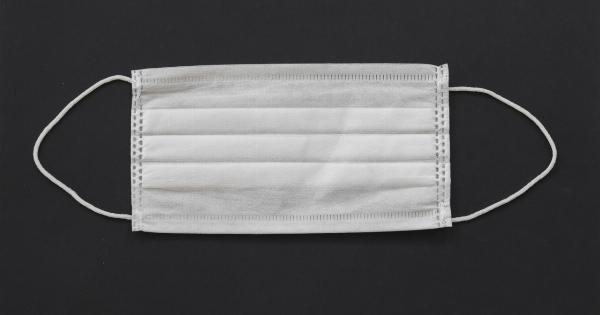When it comes to attending training sessions, there are often conflicting factors that need to be considered. One such dilemma is deciding whether to attend training with a cough and sore throat or stay home.
This decision can have significant implications for both the individual and those around them. In this article, we will explore the various factors to keep in mind when making this decision, weighing the potential risks and benefits.
The Importance of Training
Before delving into the dilemma at hand, it’s crucial to recognize the value and significance of attending training sessions.
Training provides individuals with an opportunity to learn, grow, and acquire essential skills that can enhance their personal and professional lives. It allows one to stay updated with the latest knowledge and trends in their field, equipping them to overcome challenges and be more effective in their roles.
The Contagious Nature of Cough and Sore Throat
When considering attending training with a cough and sore throat, it’s essential to understand the contagious nature of these symptoms.
Coughing and sneezing can expel tiny droplets of saliva and mucus into the air, which may contain viruses or bacteria responsible for various illnesses, including the common cold or flu.
This means that attending training with a cough and sore throat can potentially expose others to these pathogens, leading to further illnesses spread within the training environment.
This is particularly concerning when training sessions involve close contact or small enclosed spaces, where the risk of transmission is higher.
Weighing the Risks and Benefits
When faced with the decision of attending training with a cough and sore throat or staying home, it’s crucial to weigh the potential risks and benefits.
While training is valuable, the well-being and health of oneself and others should always be a priority.
Your Health Condition
The severity of your symptoms plays a vital role in determining whether you should attend training.
If your cough and sore throat are mild and not accompanied by other symptoms such as fever or body aches, it could be considered safer to attend training while taking necessary precautions to minimize the risk of transmission.
However, if your symptoms are severe, persistent, or accompanied by additional symptoms, it is advisable to stay home and seek medical attention.
In such cases, attending training could not only exacerbate your condition but also put others at risk of contracting the illness.
Consideration for Others’ Health
When deciding whether to attend training with a cough and sore throat, it’s essential to think about the potential impact on others.
Some individuals may be more vulnerable to infections due to underlying health conditions, compromised immune systems, or age factors. Attending training while contagious could pose a significant risk to their health.
If you are aware that there are individuals in the training session who fall into this high-risk category, it would be responsible and considerate to stay home and avoid potentially exposing them to illnesses.
This not only protects their well-being but also fosters a supportive and caring environment within the training community.
Precautions to Minimize Risk
If you decide to attend training with a cough and sore throat, there are several precautions you can take to minimize the risk of spreading your illness to others:.
- Wear a mask: Wearing a mask can help prevent the spread of respiratory droplets containing viruses or bacteria. Ensure that the mask covers both your nose and mouth effectively.
- Practice good hand hygiene: Wash your hands frequently with soap and water for at least 20 seconds. If soap and water are unavailable, use hand sanitizer that contains at least 60% alcohol.
- Cover your mouth and nose: Use a tissue or your elbow to cover your mouth and nose when coughing or sneezing. Dispose of used tissues immediately and wash your hands afterward.
- Maintain physical distance: Whenever possible, practice social distancing and maintain a distance of at least 6 feet from others. Avoid close contact and crowded areas.
- Avoid touching your face: Touching your face can transfer viruses or bacteria from your hands to your respiratory system. Try to refrain from touching your face.
Alternative Learning Options
If you decide that attending training with a cough and sore throat is not the best course of action, there are alternative learning options to consider:.
1. Remote Learning: In today’s digital age, many training sessions offer remote learning opportunities. This allows you to participate in the training from the comfort of your home, eliminating the risk of spreading illnesses to others.
Explore if the training you are interested in provides remote learning options.
2. Rescheduling: If the training session is not time-sensitive or can be rescheduled, consider discussing with the organizers whether it is possible to attend at a later date.
This can provide you the opportunity to fully recover and participate in the training when you are no longer contagious.
3. Online Resources: In addition to remote learning options, various online resources, such as e-books, webinars, and podcasts, can provide valuable educational content.
While it may not replicate the experience of in-person training, it can still offer insights and knowledge in your field.
Conclusion
In conclusion, the decision of whether to attend training with a cough and sore throat or stay home requires careful consideration of various factors.
While training is essential, it is equally important to prioritize the well-being and health of oneself and others. Understanding the contagious nature of these symptoms and assessing the severity of your condition can help determine the risks and benefits involved.
Precautions can be taken to minimize the spread of illness, but alternative learning options should also be explored. Ultimately, making the right decision involves a balance between personal growth and responsibility towards the community.




























